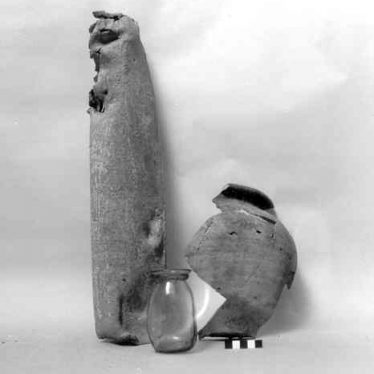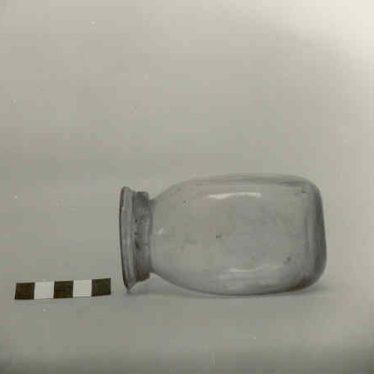'Pipe' Burial found in Mancetter.
The remains of a rare 'pipe' burial, dating to the Roman period, were found 300m south west of Barn Farm.
1 The remains of a rare and unusual method of treating the dead known as a ‘pipe burial’. They were found in 1980 in a drainage trench 30m from and parallel to the A5 south of Mancetter. Although site visits were made, it has not been possible to identify the exact location of the burial. The burial consisted of fragments of a wide necked grey ware jar, c. 2nd century AD.; eight fragments cremated bone, a length of lead pipe 49cm long with a deliberately hammered over end, an iron nail and several nail holes, indicating a perishable cover; and a small glass bottle.
2 March 1980: Machine excavations for field drains uncovered a small intact bluish-green jar, 110mm high with rim diameter varying from 54-56mm. This jar contained fragments of burnt human bone, probably of a young adult. A large piece of lead pipe, maximum length c492mm was also found.
3 The glass of the jar is a pale bluish-green in colour; vessels of this type were probably not being made much after AD 125-30. Close parallels from Mancetter are not forthcoming and the vessel seems unlikely to have been made there. The occurrence of the pipe suggests a comparison with the small number of ‘pipe burials’ known from Roman Britain. In these a pipe, usually of lead, was used to provide communication between the ground surface and the burial itself for the purpose of admitting libations.
4 Further photographs.
5 Note about the find.
6 Correspondence about the find and about ‘pipe’ burials.
7 Noted.
- For the sources of these notes, see the
- Timetrail record
- produced by the Historic Environment Record.










Comments
Add a comment about this page